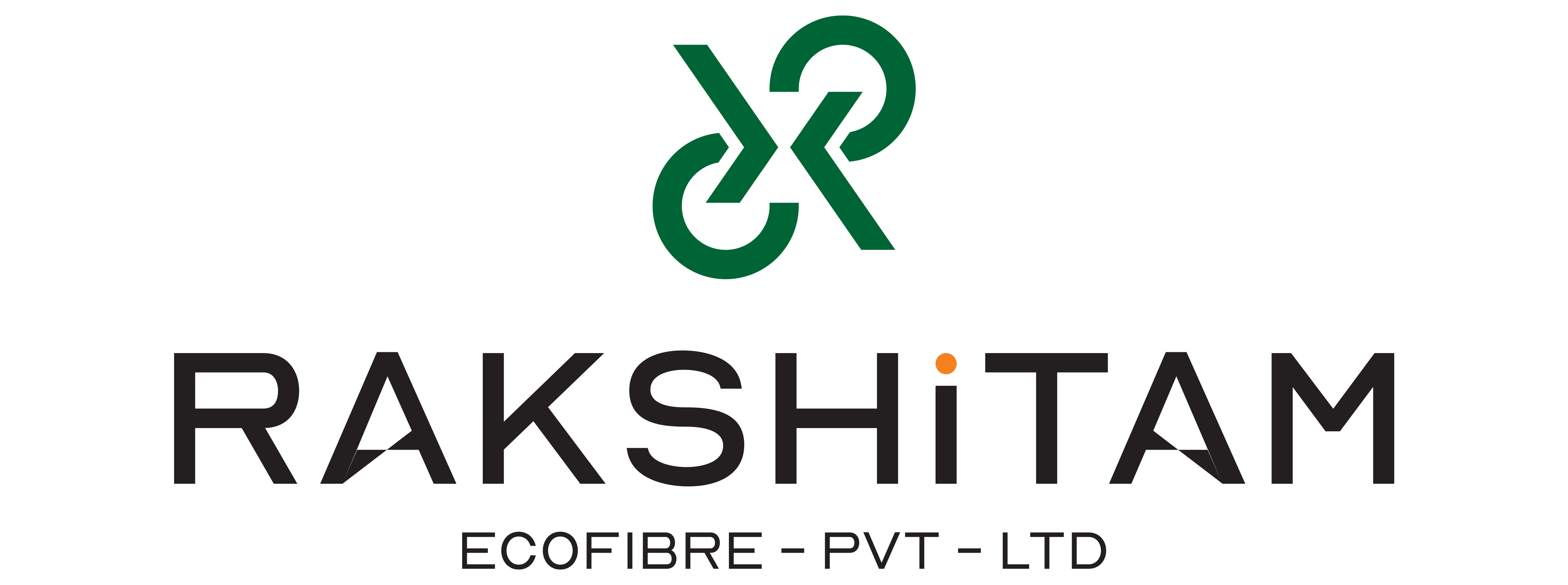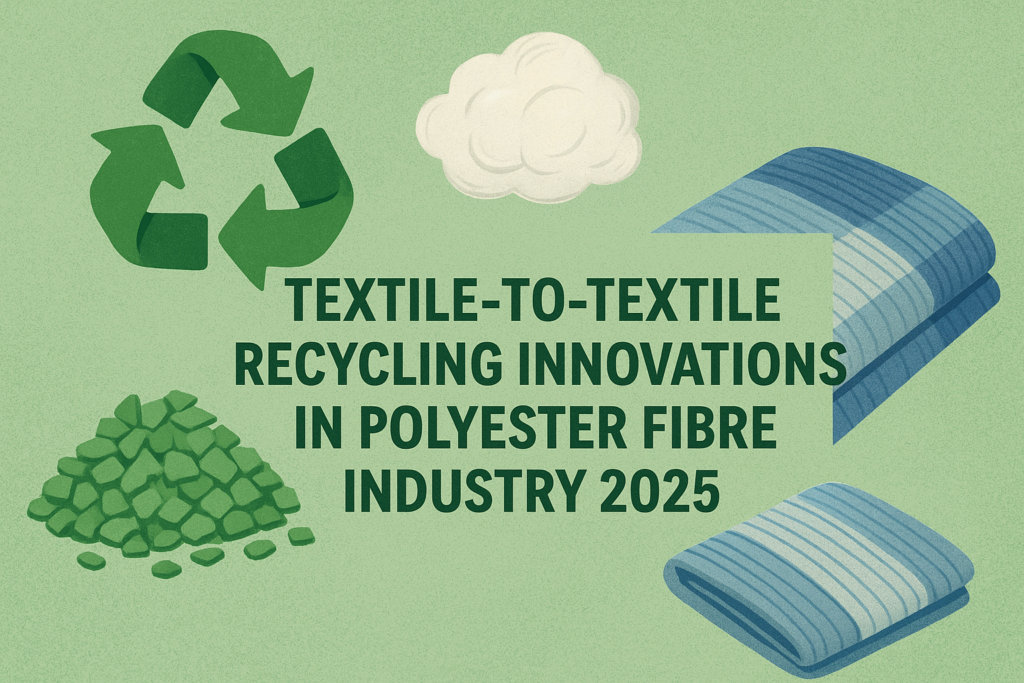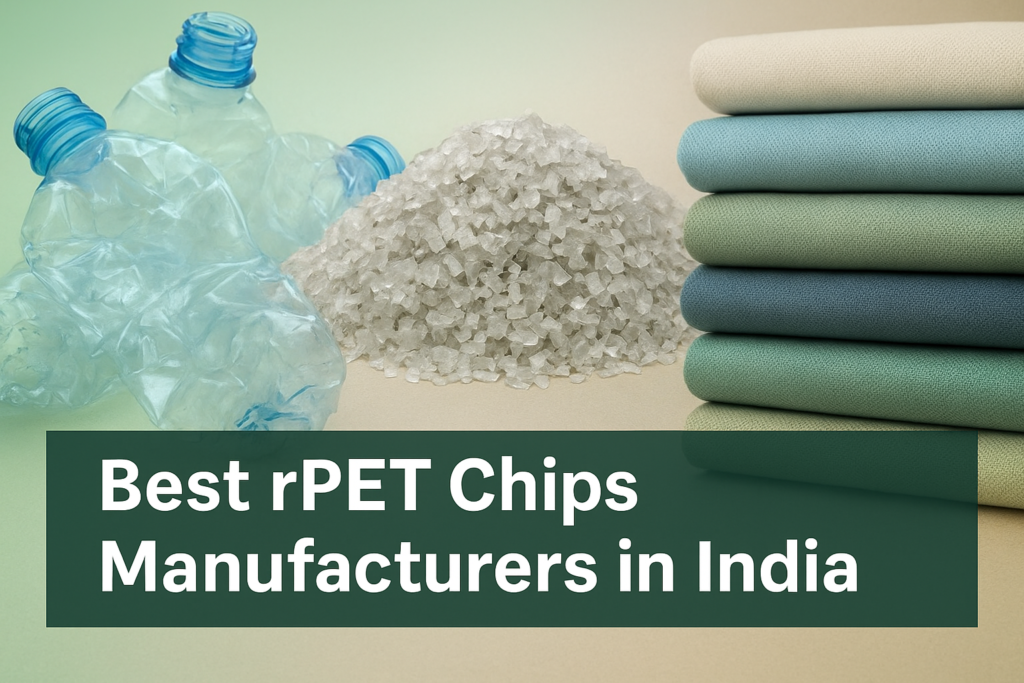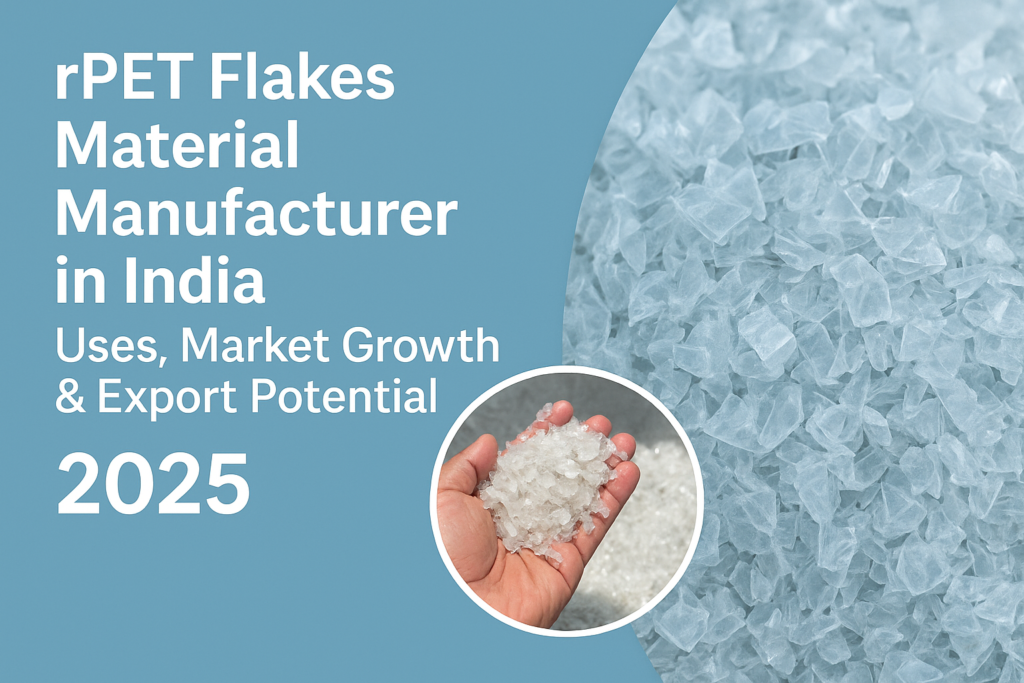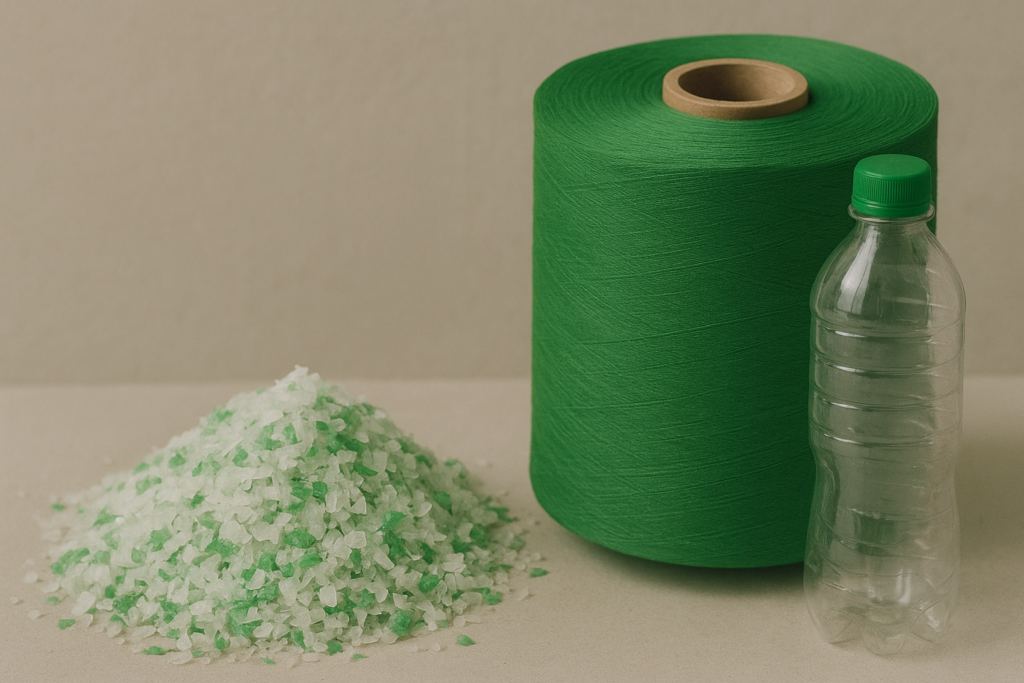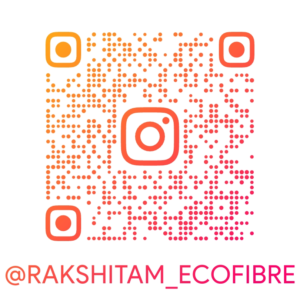Bottles of plastic are abundant in this world, thus the phrase waste to value is rapidly becoming an acronym for “Opportunity for positive environmental impact” as merchandisers, shareholders, ecological practitioners, and people internationally pine over the meaning of eco-friendly business. This transformation is most efficiently operated wherein discarded plastic bottles are turned into Recycled Polyester Staple Fiber (RPSF). Polyethylene Terephthalate (PET) bottles are reborn as high-quality synthetic fibers while seamlessly integrating into sustainable manufacturing, making a noteworthy contribution to reducing environmental degradation.
What is RPSF (Recycled Polyester Staple Fiber)?
Recycled Polyester Staple Fiber (RPSF) is a synthetic fabric made from PET (Polyethylene Terephthalate) bottles. It has a wide range of applications from textiles and furnishing to automobile and even construction materials. These used bottles are gathered, cleaned, and processed to make soft and durable fibers.
The Step-by-Step Process of Converting Plastic Bottles into RPSF
1. Collection and Sorting
Post-consumer PET bottles are collected from municipal waste containers, recycling centers, and industrial sources. They first go through sorting where non-PET bottles are selected and discarded, ensuring only PET bottles are chosen to undergo the recycling process.
2. Cleaning and De-labeling
Before the bottles can be set for shredding, they need to go through a cleaning stage where they undergo the removal of labels and adhesives, and checking of any remaining liquids. This stage plays an important role in the quality of the recycled final RPSF product.
3 Preliminary Steps: Shredding and Flaking
Clean PET bottles are shredded into small flakes, which are then undergo further purification to rid them of leftover contaminants like dirt or residue.
4 Melting and Extrusion
The PET flakes are melted at high temperatures, and then extruded through spinnerets, resulting in continuous filaments. These extruded filaments are cooled and subsequently chopped into staple fibers.
5 Crimping and Finishing
RPSF is an eco-friendly driving force in the fiber world, but it doesn’t stop there; these fibers undergo mechanical crimping to enhance texture and elasticity. This enables them to be spun into yarn or blended with разные materials. The final product is put in a box and stored until it is time to be distributed.
Industrial Uses of RPSF
RPSF is not just an eco-friendly alternative—it is a versatile and high-performing material used across multiple sectors.
- Textile Industry: In the form of yarn, it is used in clothing, upholstery, and even non-woven fabrics.
- Fabric and Home Furnishings: RPSF can be found in pillows, mattresses, cushions, and even carpets.
- Automotive Sector: It can be found in seat covers, used for insulation, and even the headliner as a part of internal trim.
- Construction: Incorporating it with concrete aids in improving strength while reducing shrinkage.
Importance of RPSF for Industry and Eco-sustainability
1. Eco-friendly Initiatives
- Keeps plastic waste off the streets, landfills, and oceans.
- Sustains the environment by lowering carbon emissions otherwise incurred by the polyester plant.
- Decreases water and energy expenditure in production.
2. Cost-Efficiency
- An advantage in financial terms is due to less oppressive contracting compared to virgin polyester.
- Lessens exploitation of crude oil.
- Encourages petal recycling systems.
3. Functional Characteristics
- Robust and long-lasting.
- Resists wrinkling or shrinking.
- Dyeing and blending with other materials is simple.
India’s Importance In RPSF Production
India is among the fastest growing countries in the world when it comes to RPSF fiber production. The Indian government supports respective policies enabling processes like recycling, and fostering nationally aligned manufacturing.
Key Factors Of Leading Indian RPSF Production Companies:
- Acutely developed recycling and extrusion machinery.
- Control is rated with a standard international organization.
- Individualized deer yards and cut lengths.
- Scheduled delivery reliability at low rates.
Determining The Most Proper RPSF Provider
When deciding the manufacturer or supplier of RPSF, look for the following points:
- Foundation of completed contracts with clients concerning PET recycling.
- Guarantee of volume, quality standards, and fulfillment.
- Should observe socio-political-responsible as well.
- Foundation of open access to production and sourcing.
Also Read: How Recycling PET Bottles is Transforming the Future of Fashion.
Concluding Remarks
Concerning the circular economy, the conversion of plastic bottles to Recycled Polyester Staple Fiber (RPSF) is a remarkable advancement. Furthermore, as industries strive to meet environmental targets and provide new materials, there is an opportunity to capitalize on this vertical by converting waste into valuable products.
Investment in RPSF enables manufacturers to partake in cleaner ecosystems, as well as answer to growing consumer demand for eco-centered products. Clearly, there is still plenty of value that can be extracted from waste—this is not only beneficial for the environment, but helps enhance many business models as well.
